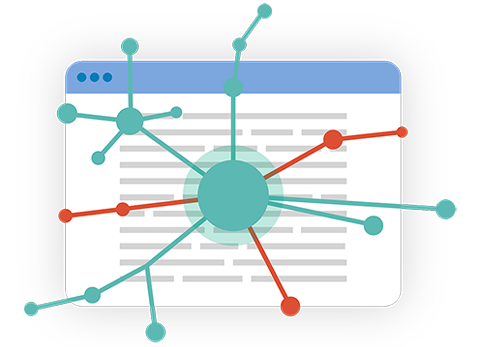
Artificial intelligence has done incredible things for the enterprise. It has helped companies improve their process efficiency, broaden understanding of their data and ultimately make better decisions. However, for all the hype around AI, there remains a glaring lack of perspective on the techniques — and their limitations.
One of the biggest misconceptions about AI is that it is synonymous with machine learning. While ML is the most commonly employed AI technique (67% of AI adopters reported current use of ML per Deloitte’s State of AI in the Enterprise, 3rd Edition), it is far from the only option and not without flaws. Unfortunately, many dismiss these options (especially those within the NLP branch of AI) without a complete understanding of their capabilities, and instead seek to maximize their potential with ML.
The Limitations of ML in NLU/NLP
We have been led to believe that machine learning can solve any and all of our problems — and in many ways, it can. However, just because ML can do something, does not mean it is the ideal method for doing so. We see this all too often when it comes to natural language understanding and natural language processing.
While machine learning is perfectly capable of supporting selected language-intensive applications, it is limited in a number of ways that prevent it from delivering optimal results. The commonsense solution to this would be to find a technology that complements the existing AI framework with human knowledge, but far too often, common sense and finesse is tossed aside in favor of other brute force efforts.
Lack of Foundational Knowledge
Language is an extremely complex and nuanced concept. A challenge for even the most intelligent humans, learning and understanding language has proven notoriously difficult for machines. While machine learning models have been trained to process language, they lack one crucial component: knowledge.
Sure, an ML model is trained on copious amounts of data, but data does not equal knowledge. The fact that a statistics model can guess the next word in a sentence doesn’t mean that it understands. You gain understanding through knowledge.
For example, Ray Kurzweil’s Google Talk to Books project was built to “answer any question by reading thousands of books.” However, this ML-based model could not consistently generate the correct answer to straightforward questions such as “Where did Harry Potter meet Hermione Granger?” because it was not explicitly spelled out in a book and unable to infer due to a lack of knowledge. In this instance, only six of the 20 answers were even about Harry Potter, while most of the rest were about other people named Harry or on completely unrelated topics.
The easiest way to establish this knowledge base is through a repository that represents knowledge in a way software can understand — also known as a knowledge graph. The knowledge graph — central to a symbolic AI approach — is critical for NLP as it injects “common sense” in the language model.
With common sense understanding of language, a model can effectively guard itself against the unintended consequences of new or unfamiliar scenarios it encounters (e.g., COVID-19). These situations frequently plague pure machine learning or deep learning language models that lack the ability to contextualize new information.
Data Disruption
Data fuels all artificial intelligence models, but people often underestimate the volume of data necessary to get a machine learning model started, and to retrain it when performance degrades. For many companies, this data demand halts AI projects before they even get off the ground. In fact, 96% of organizations run into problems with machine learning projects due to data scarcity, quality and data labeling.
Rather than rely on massive amounts of subpar data sets to fuel an ML model, companies could instead look to symbolic AI to produce smaller and more targeted sets of training data. This commonsense approach combats several data-related issues at once.
Data Scarcity
In the enterprise world, data scarcity is more common than you are led to believe. While there are a number of ways to deal with this lack of data, none of them effectively guard you against overfitting and bias to the degree symbolic AI does. Even transformers, which have emerged as a common method to train models, do not seem applicable beyond smaller toy projects.
Soaring Costs and Carbon Footprints
The cost and carbon footprint required for organizations to train and maintain huge language ML and DL models is immense. In fact, the se models are only sustainable for the wealthiest organizations. Per research by Emma Strubell, to train a language model that uses a transformer (213M parameters) with neural architecture search, it would cost roughly $1-3 million and generate the equivalent of 626,155 pounds (284 metric tons) of carbon dioxide. That equates to the lifetime output of five average American cars!
Even with the high cost and carbon footprint of these models, they often lack the robustness to combat noisiness of data and real-world data variation. This is very common in enterprise scenarios, especially in recent months due to the COVID-19 pandemic. This can all be mitigated by leveraging symbolic AI at different steps of the workflow.
Unsustainable Data Requirements
Beyond the cost and carbon footprint associated with large language models, they also require extensive training sets with which the model can be sufficiently trained. A model such as GPT-3 demands training sets the size of the Internet, which invariably include questionable if not completely unacceptable content that will increase the likelihood of bias .
Establishing Realistic Benchmarks for AI Technology
Contrary to most available software, there are no meaningful benchmarks by which enterprise organizations can evaluate AI technologies. As a result, it is exceedingly difficult to establish the ideal solution for your business case and convey the value you expect it to provide.
For AI to succeed at a higher level, there needs to be established benchmarks that account for the real-world considerations and put them in proper perspective. The following benchmarks do so effectively and should be discussed more openly:
- Total Cost of Ownership: There are several factors that impact the cost of AI ownership, but none more variable than those related to data (e.g., cost to acquire, cost to clean, cost to label, etc.). Symbolic AI can create some stability in this respect and help to establish more concrete cost benchmarks.
- Reusability: As organizations seek to scale their operations, it is critical to know how AI can scale with them (if at all). For example, a knowledge graph provides the same level of language understanding from one project to the next without any additional training costs.
- Explainability: If organizations are to build trust and transparency with both their employees and their customers, they must prioritize explainability in their AI model. This requires a clear understanding of what each AI approach is capable of, including hybrid approaches.
With a bit of perspective and common sense, there is no limit to what we can achieve with AI. After all, there’s no sense in working harder when you can work smarter.


